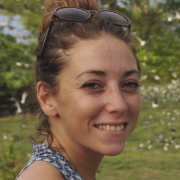Copyright : Laboratoire LEMAR- 2018
Christophe Menkès (ENTROPIE), Valérie Allain (SPC)
National
INSU-LEFE, Ministère des Armées, MEAE (Fonds Pacifique), FOF, SPC, IRD
Start Date
02/04/2025
End Date
02/04/2025
The objective of the surveys is to understand the functioning of the pelagic oceanic ecosystem and ultimately determine its influence on tuna resources in the western and central Pacific region.
In particular, it will study the relationship between the physical and chemical oceanography, phytoplankton and the mid-trophic levels (zooplankton and micronekton) which constitute the main food of all the large pelagic fish in the Pacific, including tuna, in these areas where more than 50% of the world's catches of albacore, bigeye, yellowfin and bonito tuna come from. WARMALIS 1 crossed the Western Pacific from South to North from New Caledonia to the Federated States of Micronesia. WARMALIS 2 and WARMALIS 3 will be carried out in 2022 and 2023, respectively in the Central Pacific from South to North, from French Polynesia to the Kiribati Line Islands and at the equator from East to West, from French Polynesia to Papua New Guinea.
A component of MICROPAC will focus on increasing our knowledge on the ecology of micronekton by using stable carbon and nitrogen isotopes, mercury concentrations and mercury isotopes as a tracer of trophic interactions between tunas and micronekton and their feeding depth.
Laboratory Members
Contributors
- SPC: V. Allain, E. Vourey, A. Portal
- ENTROPIE: C. Menkès, L. Barbin
- MIO: M. Rodier
- IMAGO: C. Bachelier, D. Vignon, D. Varillon
- MERCATOR: P. Lehodey
- CESAB: A. Receveur
- GET: D. Point












